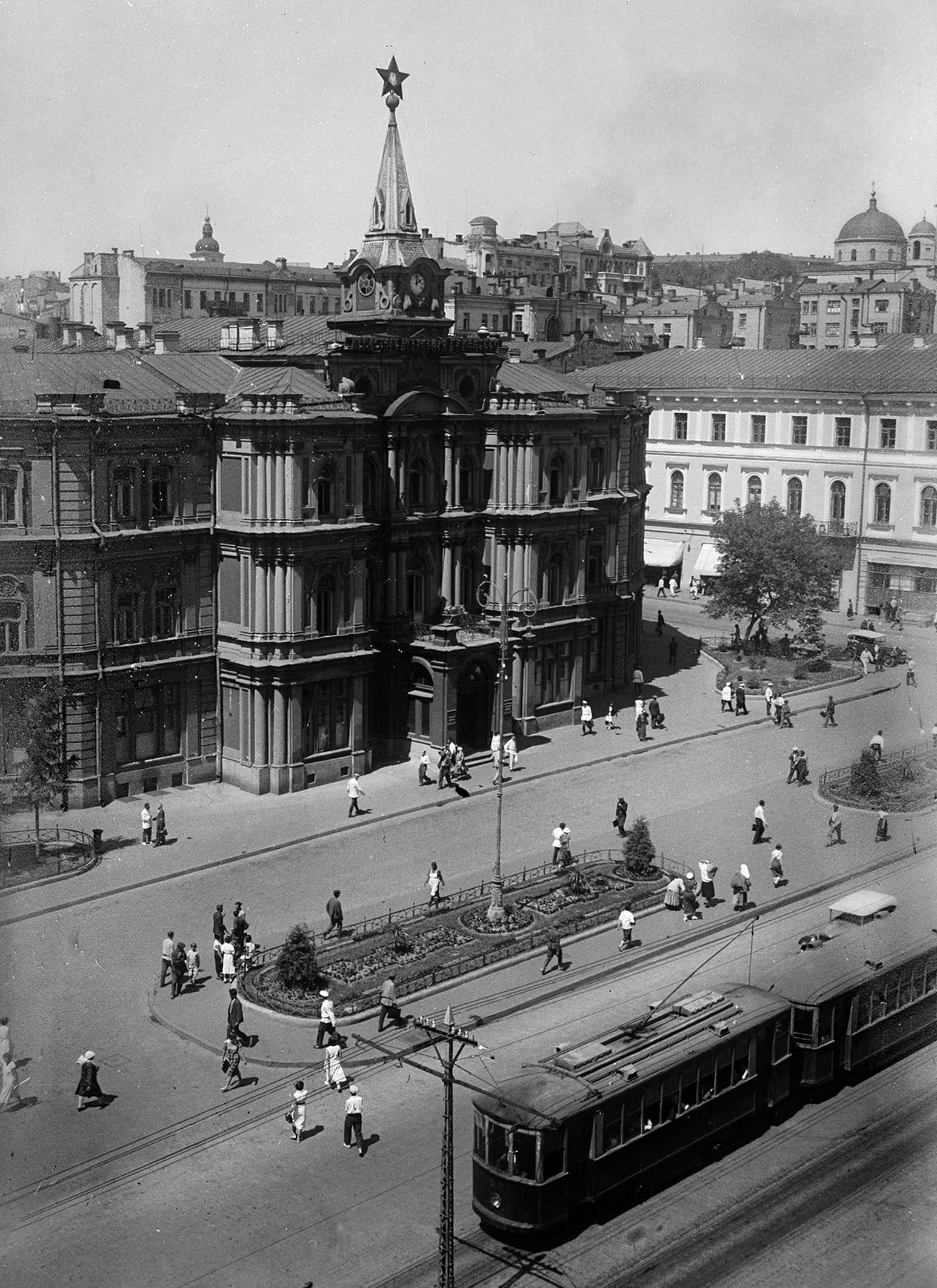"Journey Beyond the Everyday": Kyiv in the pages of Advice for Visitors, in 1928
Kateryna Sosnina
National University Kyiv-Mohyla AcademyJune 19, 2012 / 4.30pm
Center for Urban History, Lviv
"At the platform, the Moscow tourists are met by the labourers of Kyiv. The orchestra--this time, a real string orchestra. Taking off their caps and joining the general chorus, the Muscovites step out of the train. On the square before the train station, there's a flying rally. Tramways approach the station, and the tourists set off on a tour of the sparkling May Daylights of Kyiv." This is how a proletarian tourist holiday appeared in the May 1929 issue of the journal On land and sea: for their professional celebration workers were organized on a holiday to a neighbouring republic, in order to learn more about their fatherland. How did Kyiv open itself to these travellers, and more specifically, what sightseeing in Kyiv was proposed to tourists? How were excursions organized and what were they supposed to give to the Soviet tourist: entertainment, or useful information?
Throughout the 1920s and 1930s, the institutional activity of sightseeing and excursions in the USSR went through several changes of infrastructure and content. At the beginning of the 1920s excursions and sightseeing operated under institutions of political education, but by the end of the 1920s tourism constituted its own institutional branch. The republics followed the all-Union structural model and changed the institutions managing tourism.
In her presentation, Kateryna Sosnina first observed the changes in infrastructure and meaning of sightseeing and tourism in the 1920s and 1930s, and then on the example of Advice for Visitors about Kyiv, 1928, she attempted to articulate the particularities of the presentation of the city to visitors from various corners of the Soviet Union.
first-year graduate student at the National University Kyiv-Mohyla Academy. Graduate of the one-year master’s program in East Central European history at the Central European University (Budapest). Her work focuses on Soviet social history; history of leisure practices, especially tourism; social anthropology.Kateryna Sosnina
Media Partners:
Credits
Сover Image: Former building of the Kyiv City Duma (destroyed in 1941), 1920-1930 / The H. Pshenychnyi Central State CinePhotoPhono Archives of Ukraine
